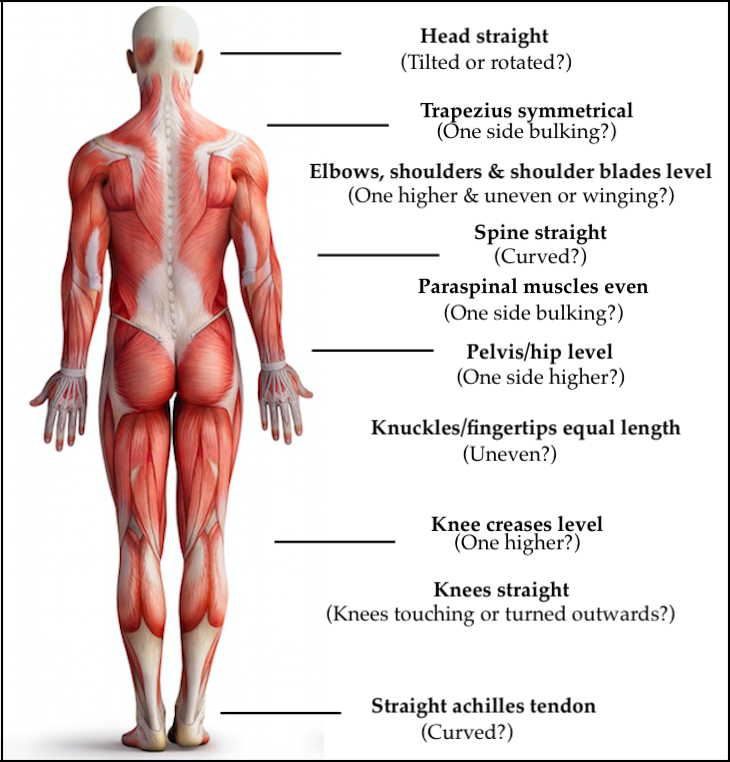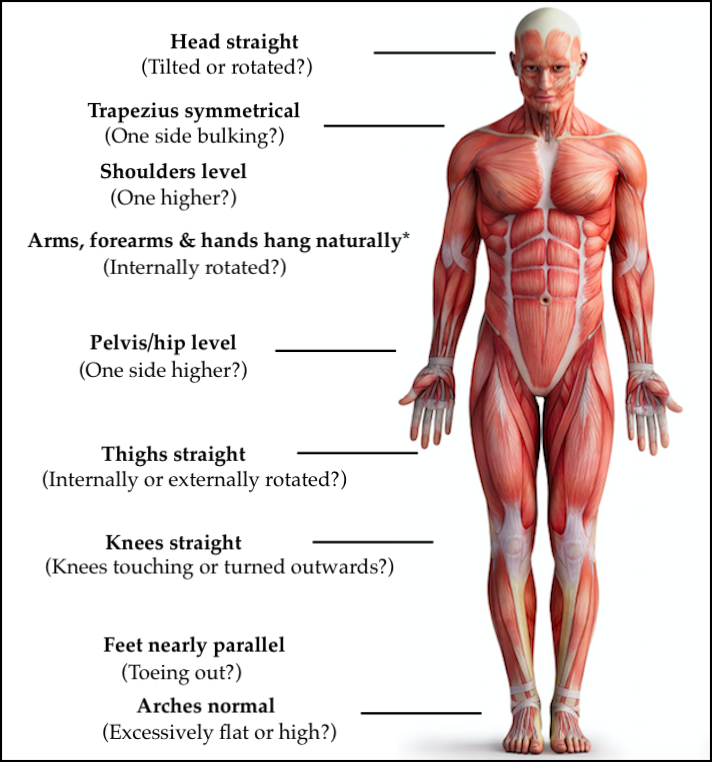The Ideal Standing Posture


In this article I will show you what the ideal standing posture looks like and how you can check and improve yours.
We all know that many physical issues such as muscle soreness and tightness result from bad/poor posture and can easily lead to chronic pain or injuries.
Believe it or not, according to the Harvard Medical School, slouching can even promote heartburn, constipation and incontinence.1
In today’s society, where more and more people work in front of a computer for a living and spend a lot of time on their smart phones, muscular dis-balances are pre-programmed.
With that being said, it doesn’t mean that people who have a physical job are 100% healthy and functional. Yes, moving around is often far better than being stuck on a chair all day, but tradesmen, for example, often lift heavy objects and repeat the same movements multiple times, which means they also use their muscles in an unbalanced way.
Unfortunately, most of us need to work to earn money, so what can we do to get better? First, we need awareness. Being aware of our postural imbalances is only possible when we know what the ideal standing posture looks like.
The following three images will show a rear, front and side view. The ideal positions of individual body parts are written in bold. The question below might help you to know what you are looking for.



Isn’t it interesting to see how many “things” we need to take into consideration? Knowing that a tiny misalignment affects our whole body and can throw us off balance, doesn’t make it any easier. This is why we have to take this topic so seriously and why we have to be proactive.
Now, it’s time to check your posture.
DO IT YOURSELF WITH A LITTLE HELP
Grab your partner, friend, family member or anyone that is happy to assist you. If there is no one around, you can at least check out the front view by using a mirror.
Dress down to your underwear (if you wish) and stand as normal as possible, relaxed, barefoot, with your arms hanging comfortably by your side and your feet in a position that is comfortable for you as well.
Take a deep breath and let your assistant, who is looking at your body from the front, back and side, do the rest. Tell your helper to have a look at the above-mentioned criteria from a 2-3 metre distance, if possible. They should write down what he or she has observed. If desired, swap and repeat the process for your partner.
If you are hesitant, because you already noticed certain imbalances in the past yourself, it is definitely a good idea to let somebody else have a look at you. As much as you try, you cannot look at yourself from behind or the side without tilting your head or rotating your upper body, which always distorts your natural posture. Also, having multiple people looking at you can be a great idea. They might all pick up something different or in case it’s the exact same thing, there might be a good chance that it is true.
But in general, please, don’t worry about missing some postural dis-balances. It is completely fine if you only notice the most obvious ones that stand out. If you are interested in a professional assessment, please get professional help.
Here are the easiest (and some of the most common ones) to spot:
- Tilted head or forward head position
- One shoulder higher than the other
- Internally rotated shoulders and forearms
- Excessive spine curvature in the upper back (hunchback)
- Excessive spine curvature in the lower back (swayback)
- Knees touching (knock-knee) or knees turn outwards (bowlegged)
- Feet pointing outwards or inwards
MAKE LITTLE CHANGES
The first step was to be aware, the second one is to correct. This is where strengthening and stretching exercises are very important. Since these exercises depend on the individual muscular dysfunction, we will write separate posts about the most common ones in the future.
Before or while you start training, we highly recommend paying more attention to your physical movements and positions from now on. How do you sit, stand, sleep, walk, carry your bag, lift, etc? For example:
- If you know now that your right shoulder is about 5 cm higher than your left, be more aware of your shoulders and how you use them. You might notice that you always wear a heavy handbag on your left-hand side or sometimes it’s quite the opposite, you wear your bag only on your right-hand side and consistently pull this shoulder up, so your bag won’t slide down your arm. Whichever one it is, use the opposite side and get used to swap sides regularly or even better, consider buying a backpack.
- You might notice that you keep your bodyweight on one leg while standing. Use the other leg for a while and eventually focus on distributing the weight evenly between both legs.
- Or your computer screen might not stand in the middle of your desk and that’s why your head is always slightly rotated and gives you a sore neck on one side. Once again, change to the opposite side for a few days or weeks and then move the screen into the center.
It’s all about slowly adjusting your posture, about getting your balance back. It will take time and you will have to remind yourself of those new positions several times throughout the day until your body finally does it automatically.
Little changes can make a big difference! But please, remember this article is just a little help for your daily routine with the goal to improve your posture. There might be underlying conditions or other physical dysfunctions that are the true cause for your muscle pain. Book an appointment with a doctor, physiotherapist, chiropractor,
We will publish subject related articles about common postural problems, the correct sitting/sleeping posture and supporting exercises in future posts.
Our posture affects the quality of our lives immensely and it doesn’t take that much to make some essential changes.
Stay tuned and love your body!


